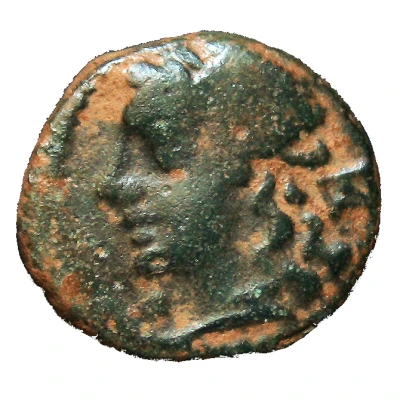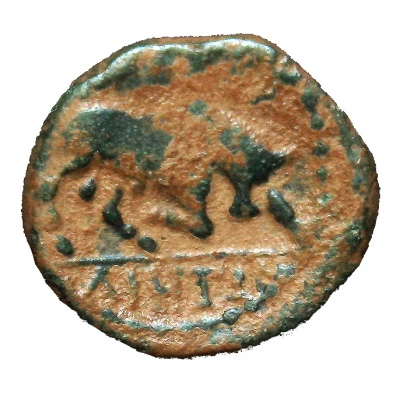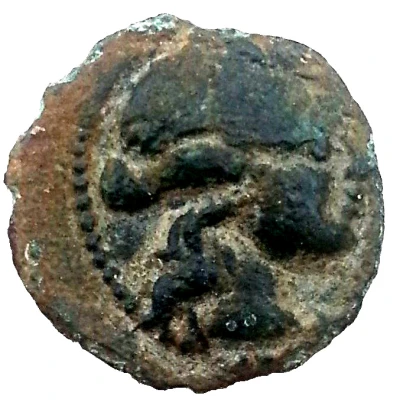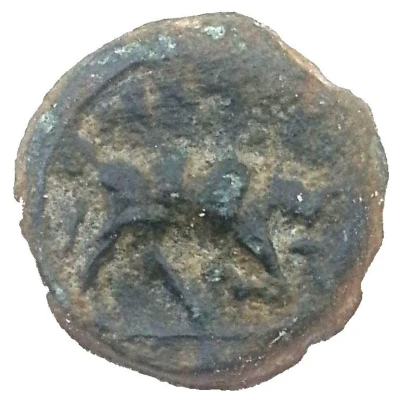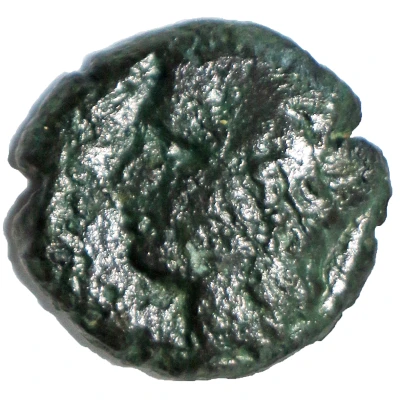
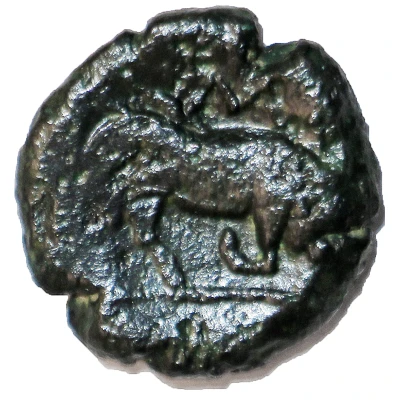

Hemiobol Bull 150 BC - 120 BC
| Bronze | 3.92 g | 15 mm |
| Issuer | Massalia (Gaul) |
|---|---|
| Type | Standard circulation coin |
| Years | 150 BC - 120 BC |
| Value | Hemiobol (1⁄12) |
| Currency | Phocaean Drachm |
| Composition | Bronze |
| Weight | 3.92 g |
| Diameter | 15 mm |
| Shape | Round (irregular) |
| Technique | Hammered |
| Orientation | Variable alignment ↺ |
| Demonetized | Yes |
| Updated | 2024-10-10 |
| Numista | N#228542 |
|---|---|
| Rarity index | 95% |
Reverse
Bull butting right, legend above
Script: Greek
Lettering: MA
Translation: Massalia
Comment
It is thought this type prompted a ruler in Kent to produce Britain’s first coinage.
Interesting fact
The Hemiobol (Bull) coin was used as a form of currency in the ancient Greek city of Massalia, which is now modern-day Marseille, France. The coin features an image of a bull on one side and an inscription on the other. The bull was a symbol of strength and fertility in ancient Greek culture, and it's believed that the coin was used as a form of payment for goods and services. Despite being made of bronze, the coin is relatively rare and highly sought after by collectors today.
